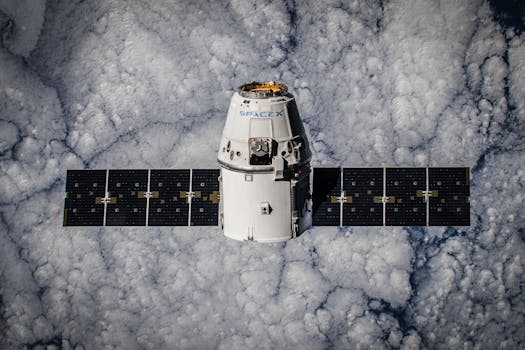
The Future of Satellites is rapidly evolving, with advancements in technology and innovation leading to new opportunities for space exploration and communication. The future of satellites is looking brighter than ever, with private companies like SpaceX and Blue Origin pushing the boundaries of what is possible in space. One of the most significant advancements in satellite technology is the development of small satellites, also known as CubeSats. These tiny satellites are approximately the size of a shoebox and weigh less than 3 pounds, making them much cheaper to launch than traditional satellites.
Another area of innovation in satellite technology is the use of reusable rockets. Private companies like SpaceX have developed rockets that can launch satellites into space and then return to Earth, landing safely and ready to be used again. This technology has the potential to greatly reduce the cost of launching satellites, making it more accessible to companies and governments around the world. In addition to these technological advancements, there are also new applications for satellites that are being explored. For example, satellites are being used to provide internet access to remote and underserved communities, helping to bridge the digital divide and promote economic development.
The use of satellites for Earth observation is also becoming more prevalent. Satellites are being used to monitor climate change, track natural disasters, and predict weather patterns. This information is critical for helping us to better understand our planet and make informed decisions about how to protect it. In the future, we can expect to see even more innovative applications of satellite technology. For example, satellites could be used to create a network of sensors that can detect and track objects in space, helping to prevent collisions and promote safe space travel.
Advancements in Satellite Technology
There have been many significant advancements in satellite technology in recent years. One of the most notable is the development of advanced propulsion systems, which allow satellites to change their orbit and position more efficiently. This technology has the potential to greatly extend the life of satellites, reducing the need for replacement and making them more cost-effective.
Another area of innovation is the use of advanced materials and manufacturing techniques. For example, some satellites are now being made with 3D printing, which allows for the creation of complex structures that cannot be produced using traditional manufacturing methods. This technology has the potential to greatly reduce the cost and weight of satellites, making them more efficient and effective.
New Applications for Satellites
In addition to these technological advancements, there are also new applications for satellites that are being explored. For example, satellites are being used to provide internet access to remote and underserved communities, helping to bridge the digital divide and promote economic development. This is being achieved through the use of constellations of small satellites, which can provide high-speed internet access to areas that are not currently served by traditional telecommunications infrastructure.
The use of satellites for Earth observation is also becoming more prevalent. Satellites are being used to monitor climate change, track natural disasters, and predict weather patterns. This information is critical for helping us to better understand our planet and make informed decisions about how to protect it. For example, satellites are being used to track the movement of glaciers and ice sheets, helping scientists to understand the impact of climate change on our planet.
The Future of Satellite Technology
In the future, we can expect to see even more innovative applications of satellite technology. For example, satellites could be used to create a network of sensors that can detect and track objects in space, helping to prevent collisions and promote safe space travel. This technology has the potential to greatly reduce the risk of accidents in space, making it safer for both people and payloads.
Another area of innovation is the use of satellites for deep space exploration. For example, satellites are being used to explore the surface of Mars, helping scientists to understand the geology and potential habitability of the planet. This information is critical for helping us to better understand our place in the universe and to search for life beyond Earth.


